Living in a house can become exciting or dull depending on the environment, ambience, and the home interior. If you want a fresh and lively atmosphere, what is better than plants? However, a lot weighs on the type of plants. But plants that need high maintenance can take a lot of your busy time. However, that is not the case with indoor water plants. They provide fresh air as they are mostly disease resistant, add a flair of colour, and need a little care from your end. So, let us look at the indoor water plants that beautify your home while keeping you off-duty for upkeep:
Indoor water plants for home
Each water plant has specific medicinal or purifying qualities and is easily available in the market. There is no need for you to worry as we have researched the best water plants for you:
Peace Lily
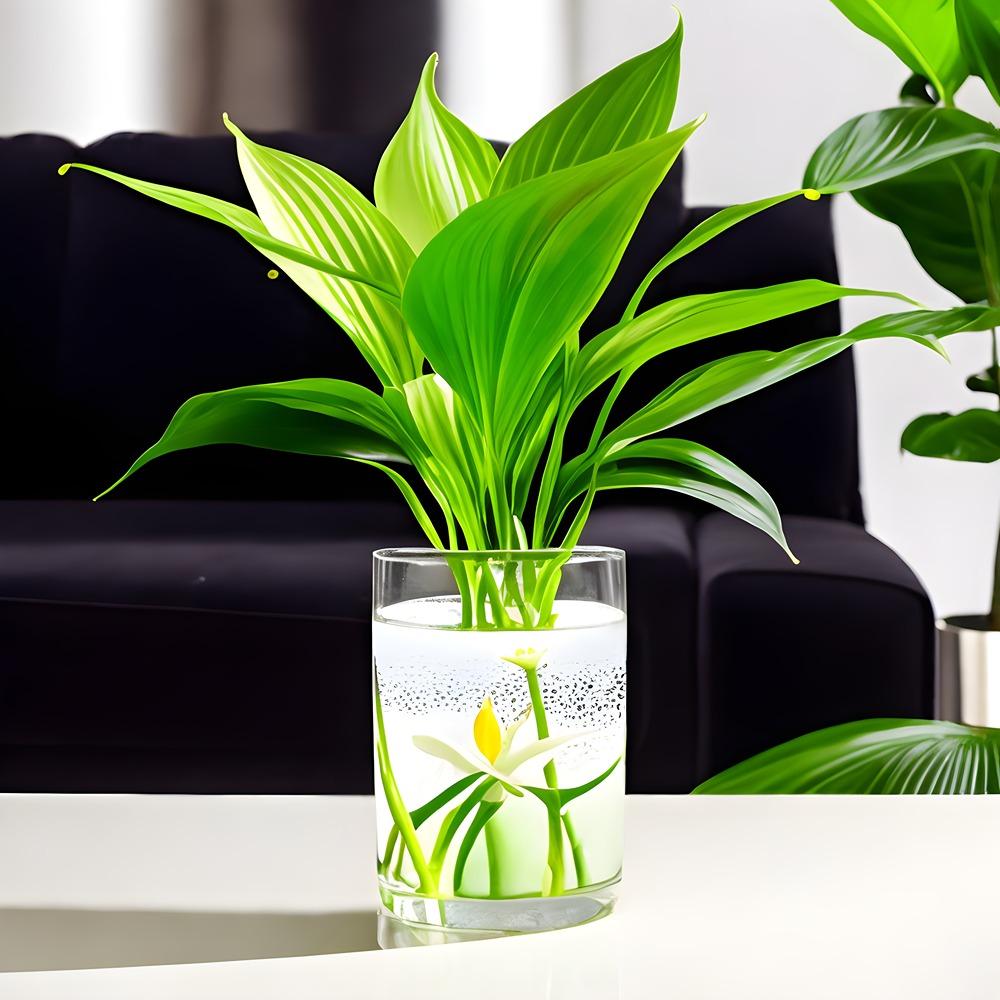
Popular for its ability to purify the air, it grows well in low light and needs little maintenance. Due to its elegant white blooms and glossy green leaves, most homeowners prefer this plant. It boosts air quality, filters out contaminants like formaldehyde, benzene, and ammonia, and helps control humidity levels. Even though it is safe, peace lily can slightly irritate you if you eat it. Therefore, you should keep it out of the reach of your curious little ones.
Lucky Bamboo
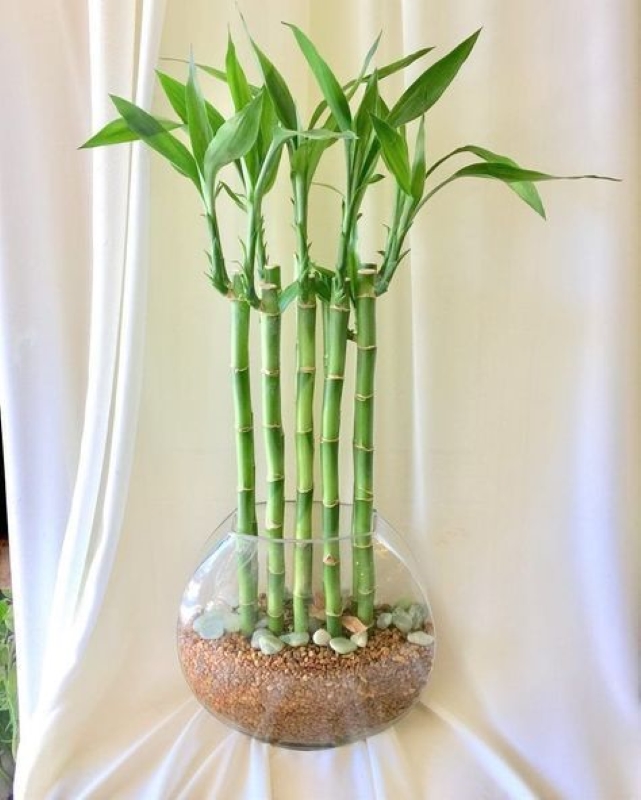
Source: Pinterest/Thursd
Unlike its name, this plant is not bamboo but does well in containers with water. Any place it is in will feel serene thanks to its thin stems and vivid green leaves. Many consider this plant a symbol of good luck and place it on desks, tables, or shelves.
Pothos
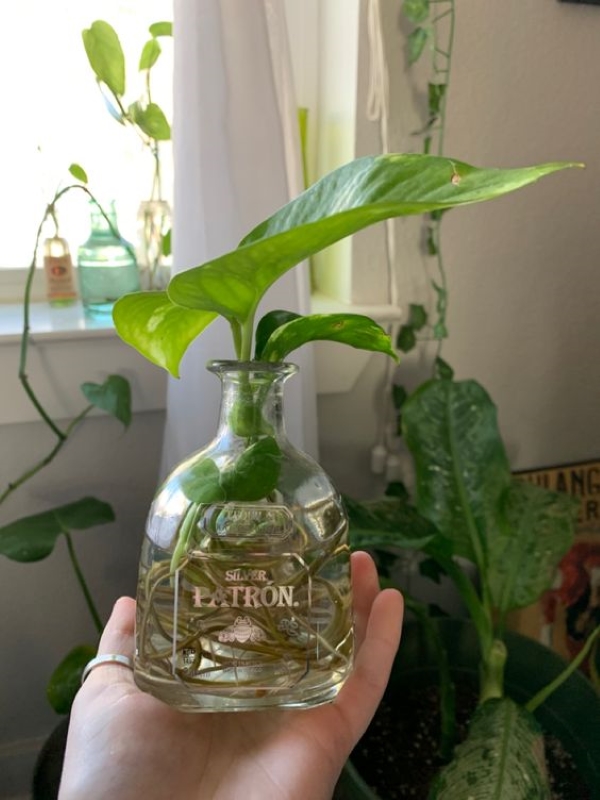
Source: Pinterest
What is better than a water plant? A plant that can thrive in both soil and water. Pothos is that plant for you. Also known as a Money Plant, Pothos is an eye-catching addition to any indoor water garden since it has heart-shaped leaves with marbled patterns.
Water Lettuce
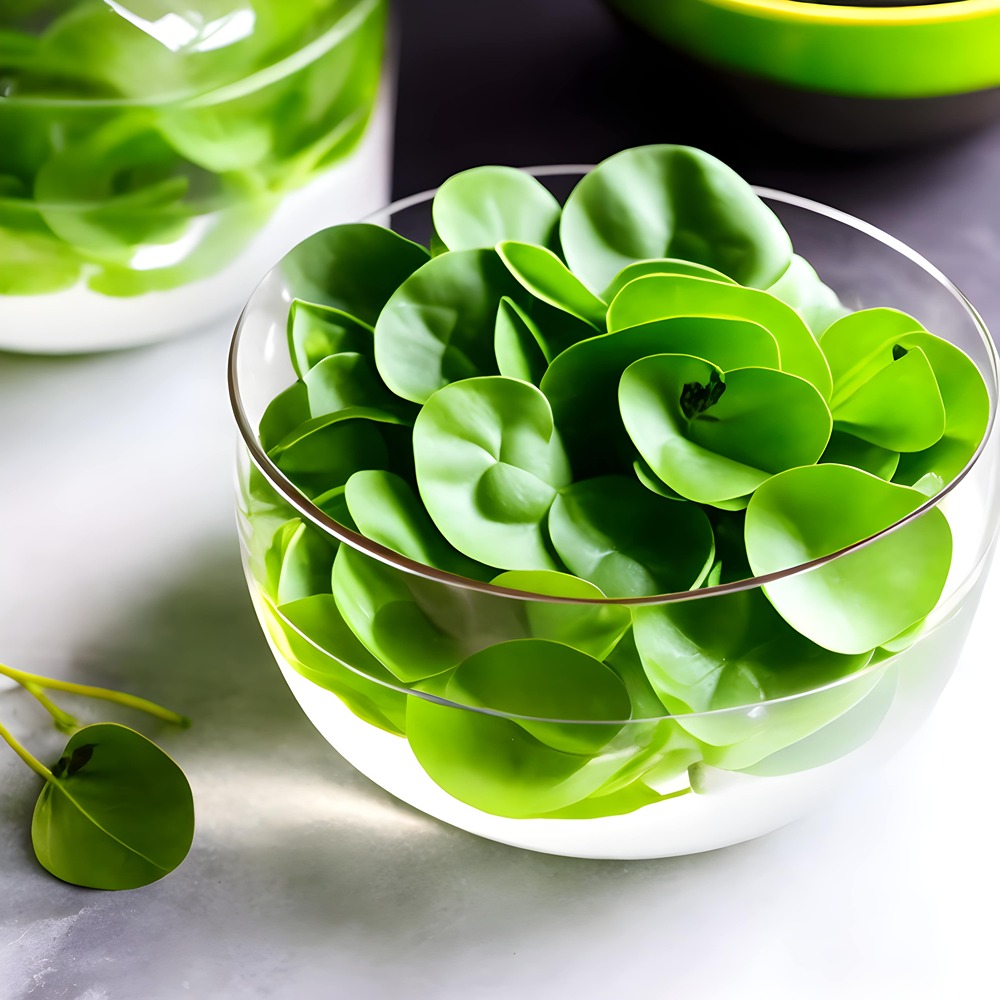
This beautiful floater cleanses water by soaking up excess nutrients and stops the formation of algae. You can use Water Lettuce in aquariums, water bowls, or water terrariums to make a rich floating plant display.
Arrowhead plant
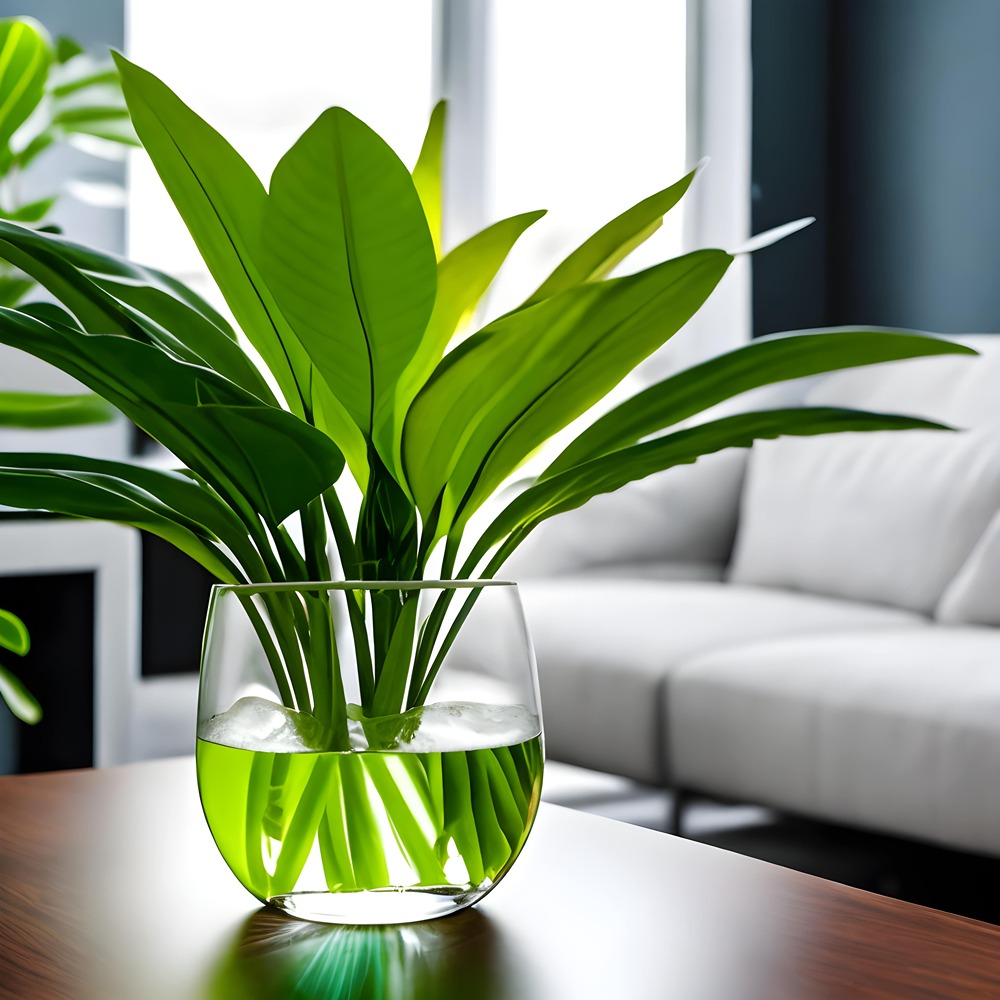
This aquatic plant is desirable for water gardens due to its eye-catching arrow-shaped leaves. It adjusts effectively to different lighting situations. Even though the arrowhead plant has no medical use, it is non-toxic and safe to keep near children and pets. You may use its foliage to give a touch of elegance to your indoor garden by placing it in terrariums or water-filled containers.
Spider Lily
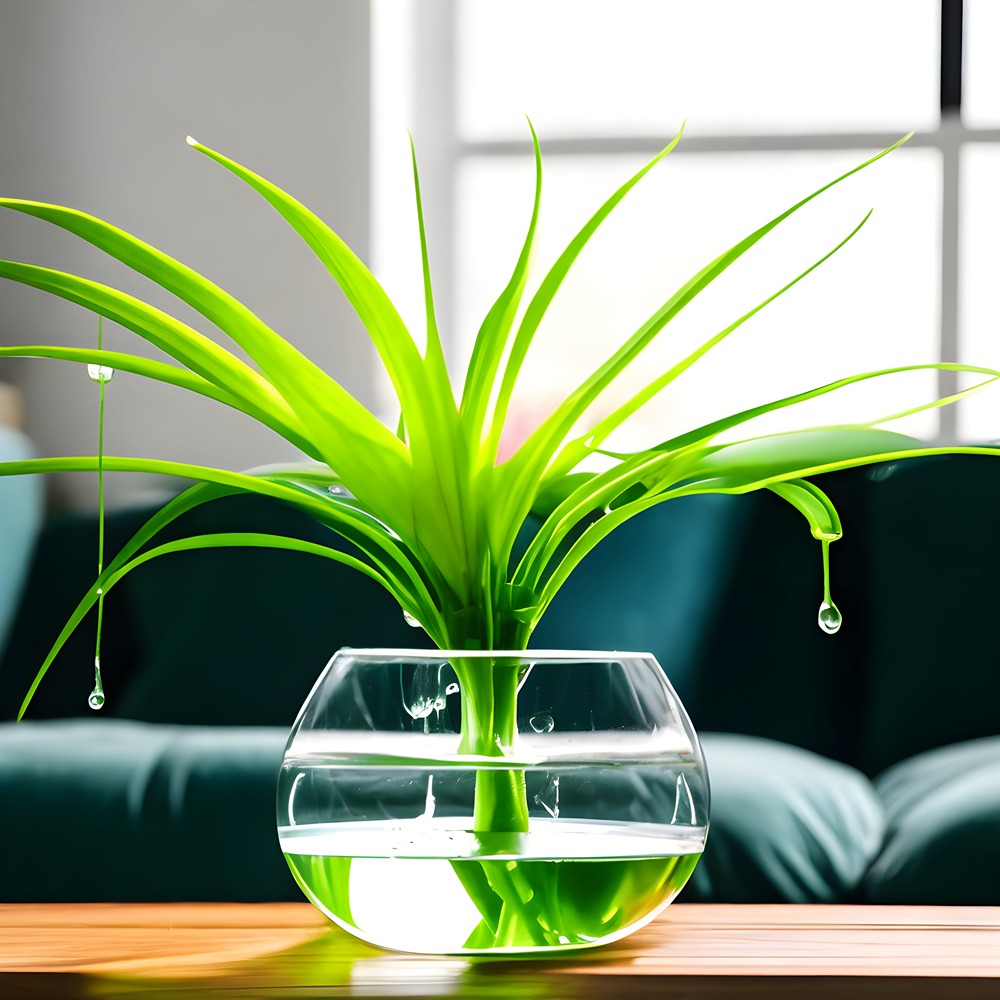
This plant grows well in water terrariums and has white, star-shaped blossoms that give your indoor garden a touch of class and scent.
Chinese Evergreen
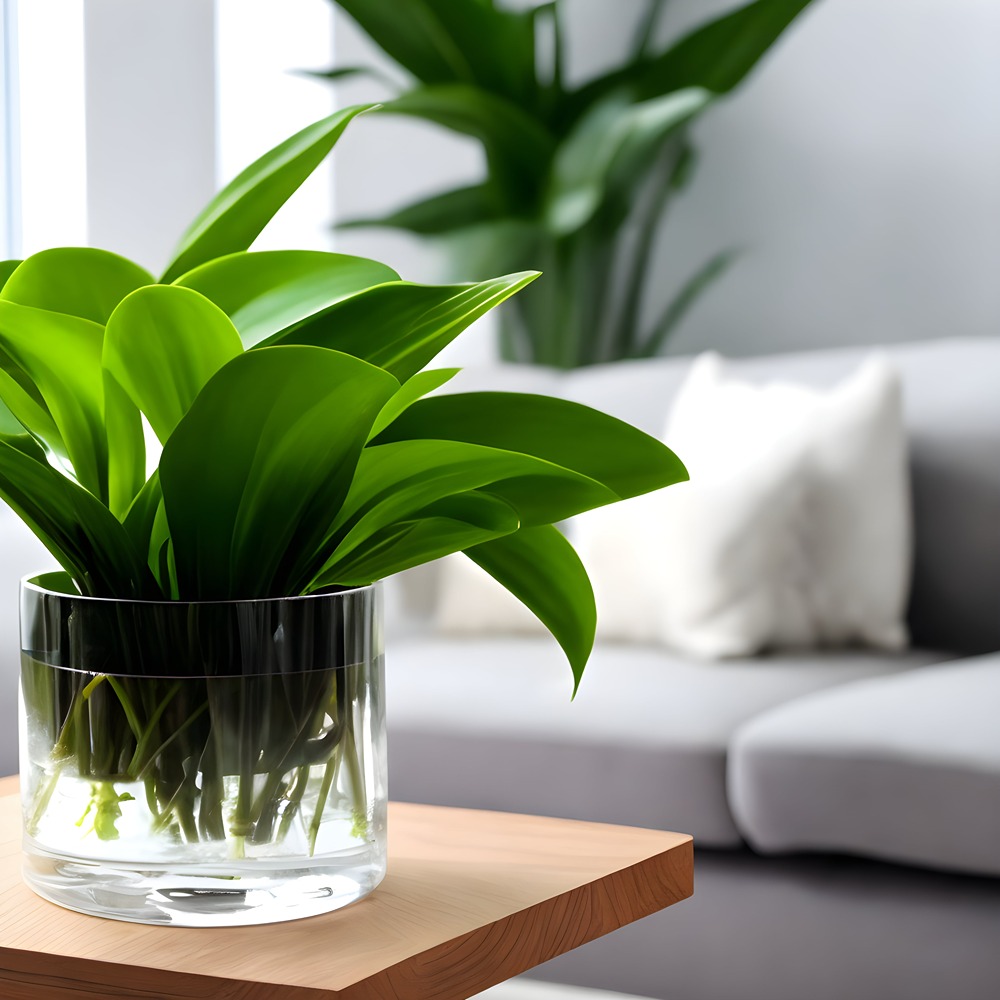
Although this plant is typically planted in soil, it can also flourish in water. Its luxuriant variegated leaves provide your water garden with a burst of colour. It can clean the air and eliminate airborne toxins such as formaldehyde and benzene.
Lucky Lotus
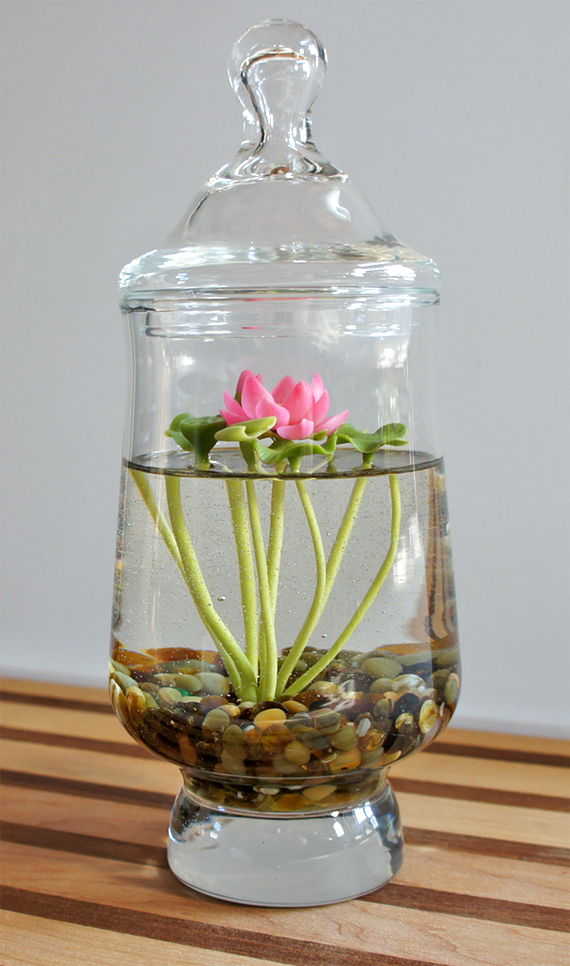
The Lucky Lotus stands out dramatically in any water feature thanks to its lovely pink or white blossoms and big foliage.
Umbrella Palm
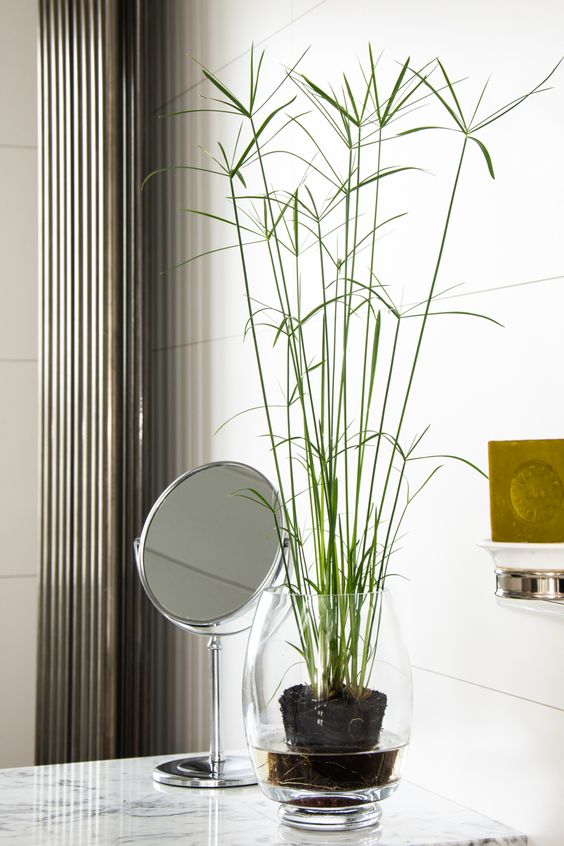
Source: Pinterest
This graceful plant resembles a mini palm tree, adding a tropical vibe to your water garden. It prefers ample sunlight and regular watering. Its lush and tropical appearance enhances your indoor water setups. You can place Umbrella Palm in larger water-filled containers, creating a focal point.
Indoor water plants with fish aquarium
Here are some plants to place in the fish aquarium:
Java moss
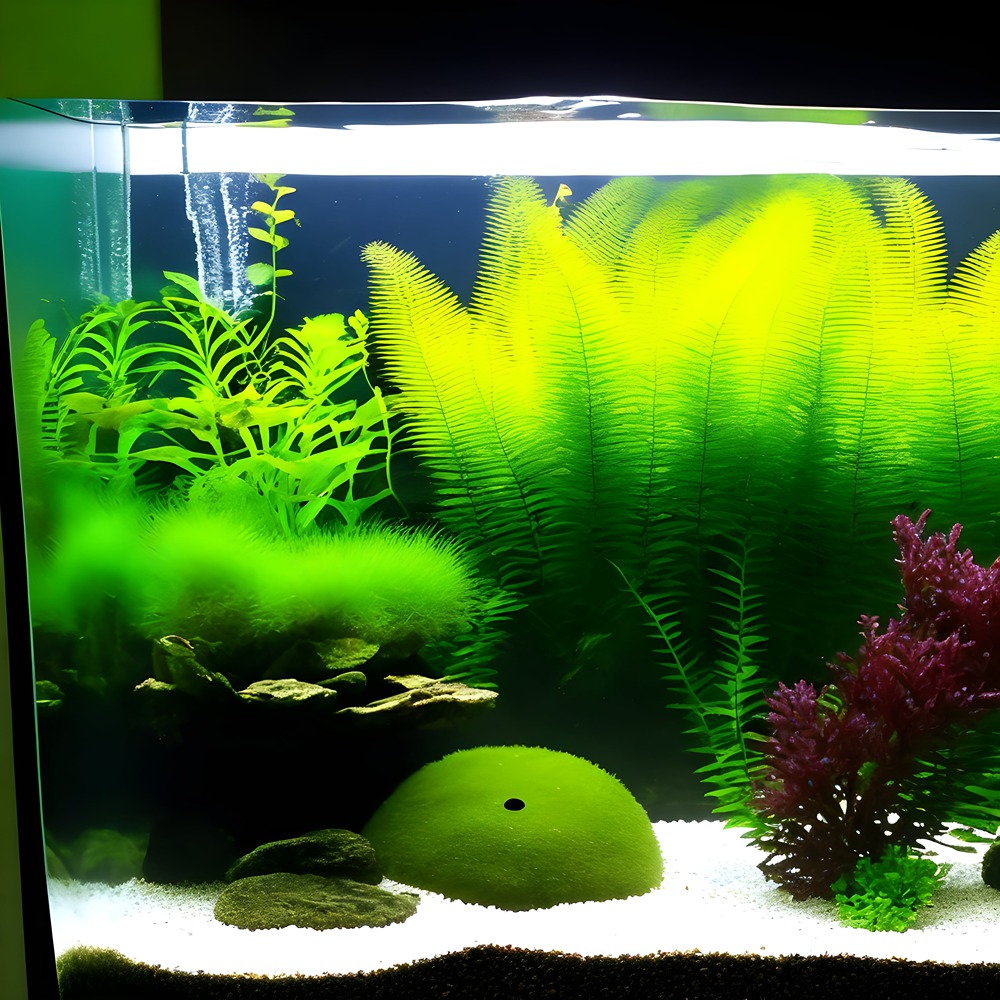
Java moss creates a lush, natural appearance in the aquarium, offering good hiding places for baby fish. Due to its dense growth, fish can lay eggs in the vegetation. Java moss can also filter and absorb extra nutrients from the water and preserve water quality.
Anubias
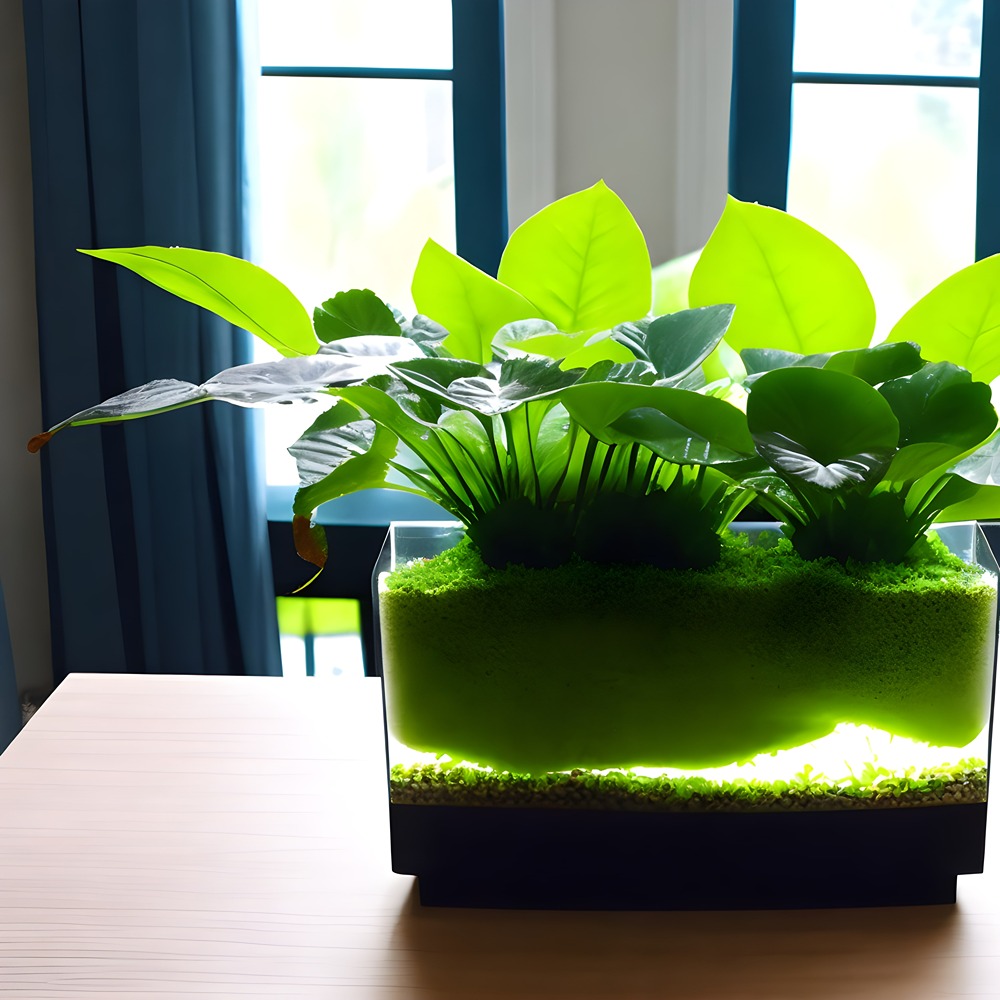
Anubias is a tough, low-maintenance plant with large leaves that give fish a place to relax and give your aquarium a hint of greenery. This plant has a modest growth rate and can survive various water temperatures and lighting conditions.
Hornwort
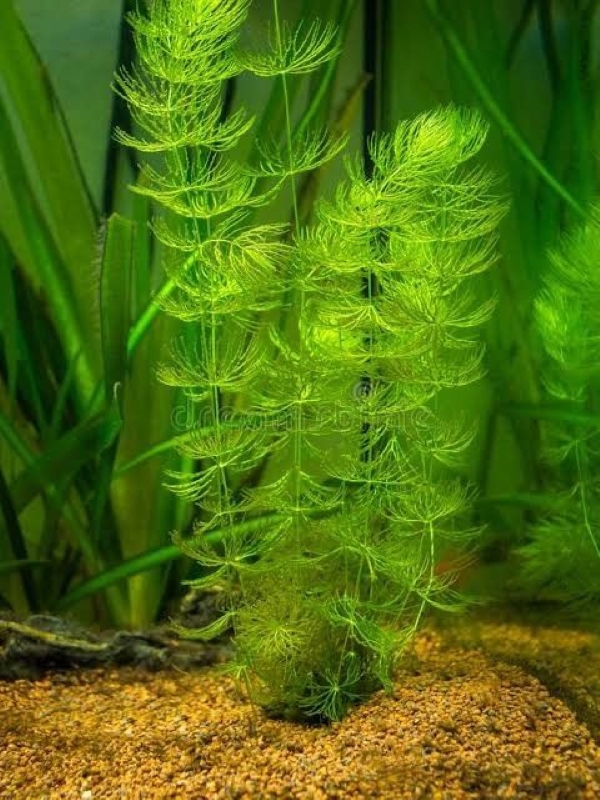
A fast-growing submerged plant, hornwort serves as a fish spawning ground and removes excess nutrients from the water, such as nitrates, phosphates, and ammonia.
Amazon Sword plant
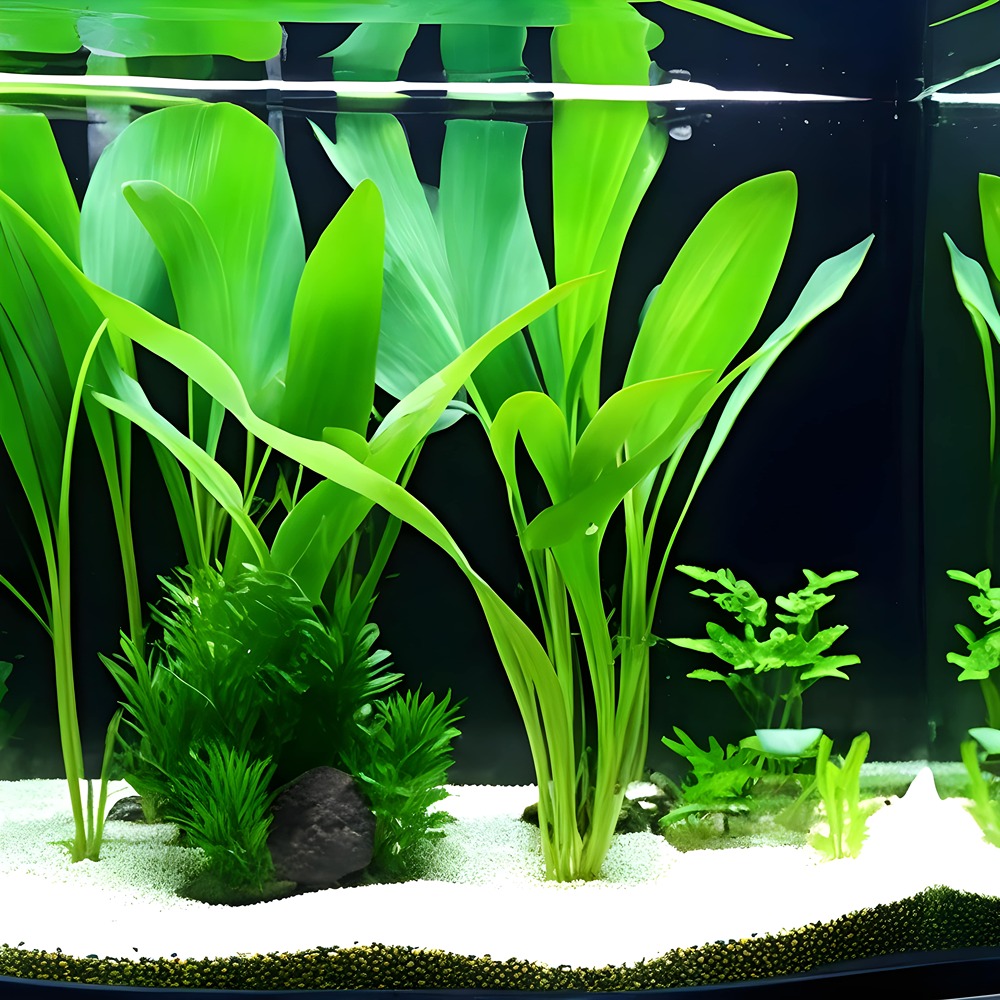
The well-known aquarium plant has long, sword-like leaves that shelter fish and create a natural atmosphere. Although this plant is relatively easy to care for, it does grow best in moderate sunshine and on a medium rich in nutrients.
Water Hyacinth
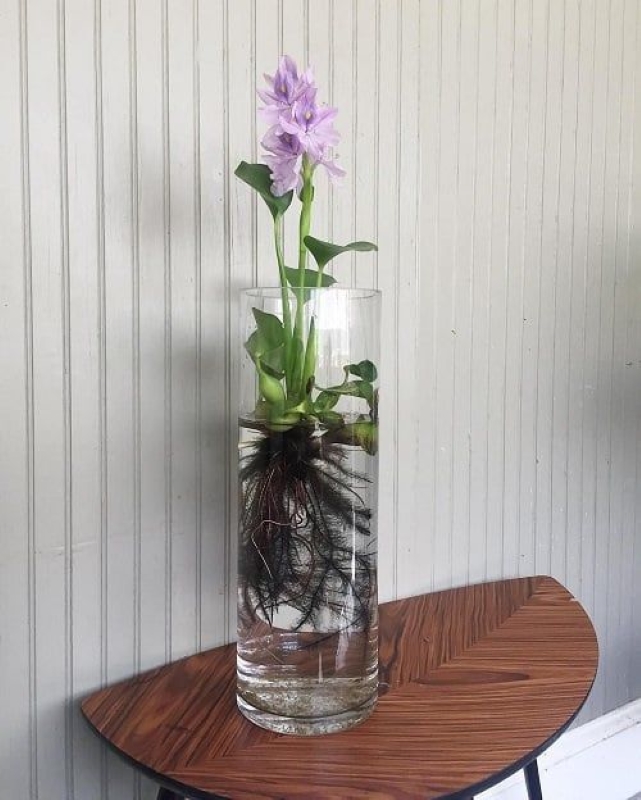
Source: Pinterest/Balcony Garden Web
Floaters such as water hyacinths make aquariums and water bowls attractive. Their show is made up of rich green leaves and purple blossoms. It spreads quickly and covers the water's surface to block sunlight. Therefore, it is necessary to keep a tap on its growth.
Indoor water plants decoration ideas
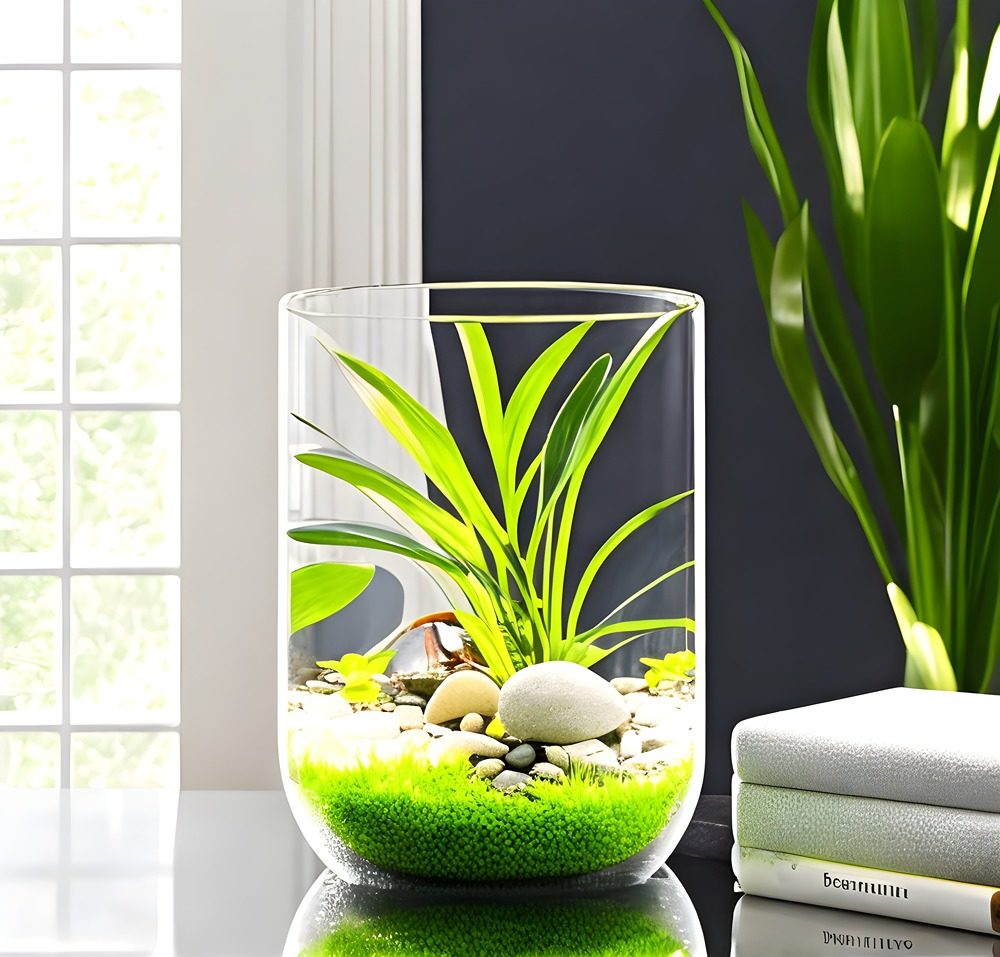
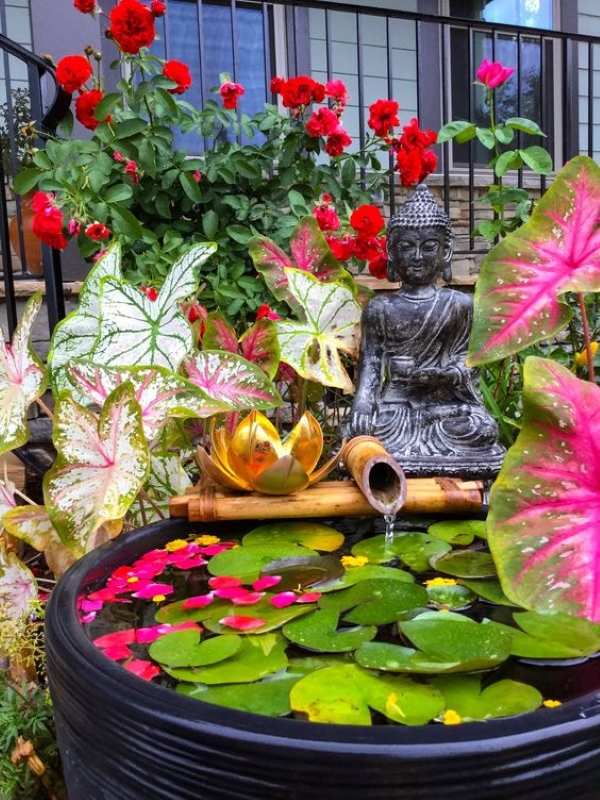
Source: Pinterest
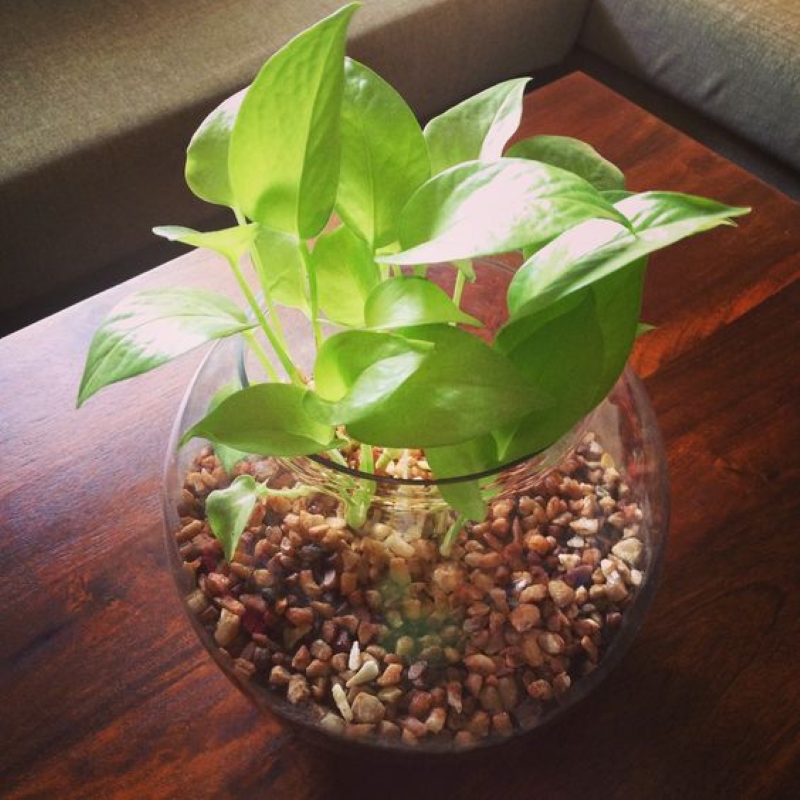
Source: Pinterest
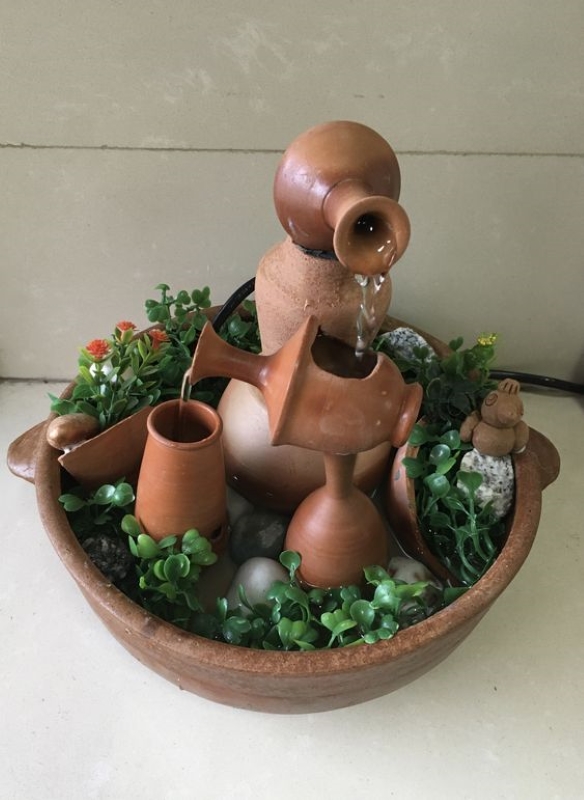
Source: Pinterest/Maroon Clay
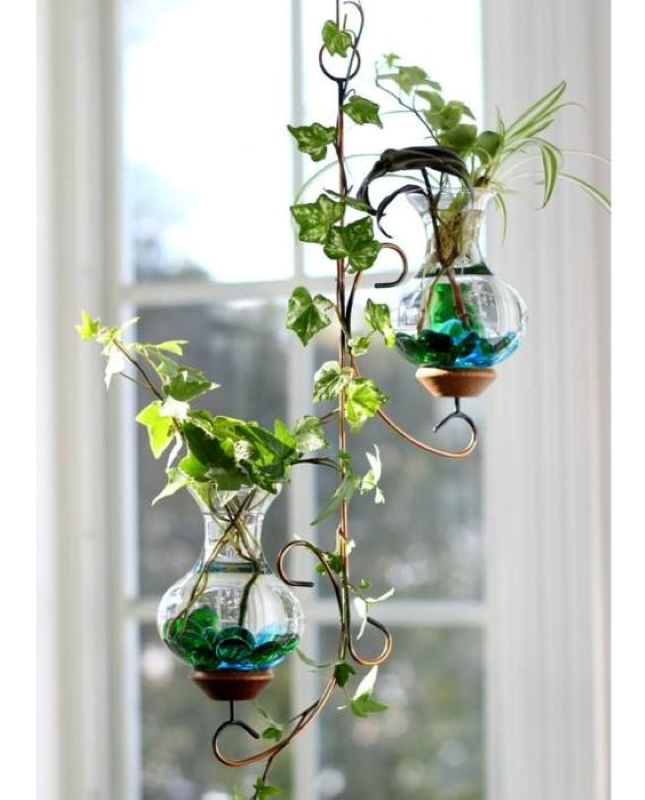
Source: Pinterest/Instructables
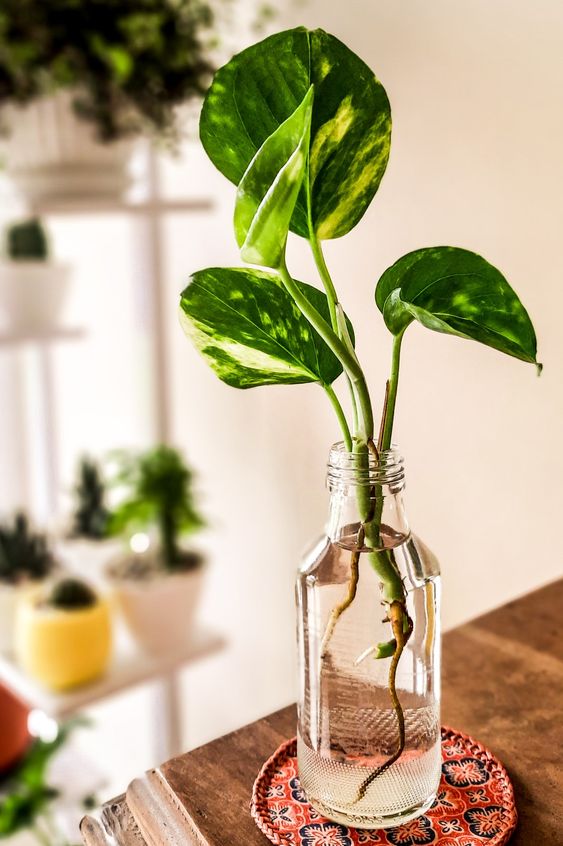
Source: Pinterest
There are many ways you can decorate indoor water plants. Take a clear glass jar or vase, add pebbles or shells, and have a mini aquatic garden. Alternatively, install a small water fountain surrounded by water plants to create a beach-like ambience in the room.
If you want a zen-like feeling, consider using a shallow basin with water, lucky bamboo, floating lotus flowers, and small rocks. Or add a touch of greenery to your fishbowl by placing small aquatic plants like Java Moss or Anubias around the edges of the bowl.
Besides, hanging planters are perfect for showcasing aquatic plants with larger growth, like spider lilies or Pothos, to add a unique touch to the room.
 Could the article help you understand the topic?
Could the article help you understand the topic?
How to care for indoor water plants?
You need not be a gardener and do not need to get your hands muddy to care for indoor water plants. However, there are still some easy ways to care for these plants. Here are five of them:
- Lighting: Most house plants growing in water need direct lighting. Keep them near windows to provide bright light. But remember not to let them consume direct sunlight, which might cause the algae to grow
- Water: Unpurified water can cause chemical damage to plants. Use distilled or dechlorinated water and keep changing the water every 2-4 weeks
- Fertiliser: Use a diluted liquid fertiliser explicitly made for aquatic plants once a month to offer essential nutrients during the growing season
- Pruning: Regularly trim yellow or damaged leaves to promote healthy development and avoid decaying detritus from impairing water quality
- Temperature: Water plants can be stressed by unsteady temperatures. Try to maintain a constant temperature to keep the water plants healthy
How to choose the right containers and planters?
Though you do not have to worry much about the indoor water plants’ health, some care is needed. Containers and planters are the parents your water plants need. They significantly impact the plants' growth, root development, and overall well-being.
To keep water in storage, use containers without drainage holes. Opt for glass or acrylic aquarium tanks with enough space for the fish to roam with the plants around. Hangers are a good option for plants having larger growth, while glass bowls are an evergreen choice to showcase the beauty of water plants.
How to handle common problems related to indoor water plants?
Algae growth, root rot, and pests are the common problems troubling indoor water plants. Reducing the amount of light and nutrients available, frequently changing water, and removing excess organic matter help reduce algae growth.
No overwatering and good water circulation prevents root rot. Regularly trim the damaged roots and replace water to keep the roots healthy. Inspect your plants frequently and isolate any afflicted to stop pests from spreading. Treat with a suitable aquatic-safe pesticide if necessary.
Conclusion
Indoor water plants offer a delightful and low-maintenance way to add nature's beauty to your living space. Whether you want a water plant for a simple glass jar or a large aquarium, they can bring harmony to any indoor environment. So, choose the right plants that match your needs and add their beauty to your home.


































